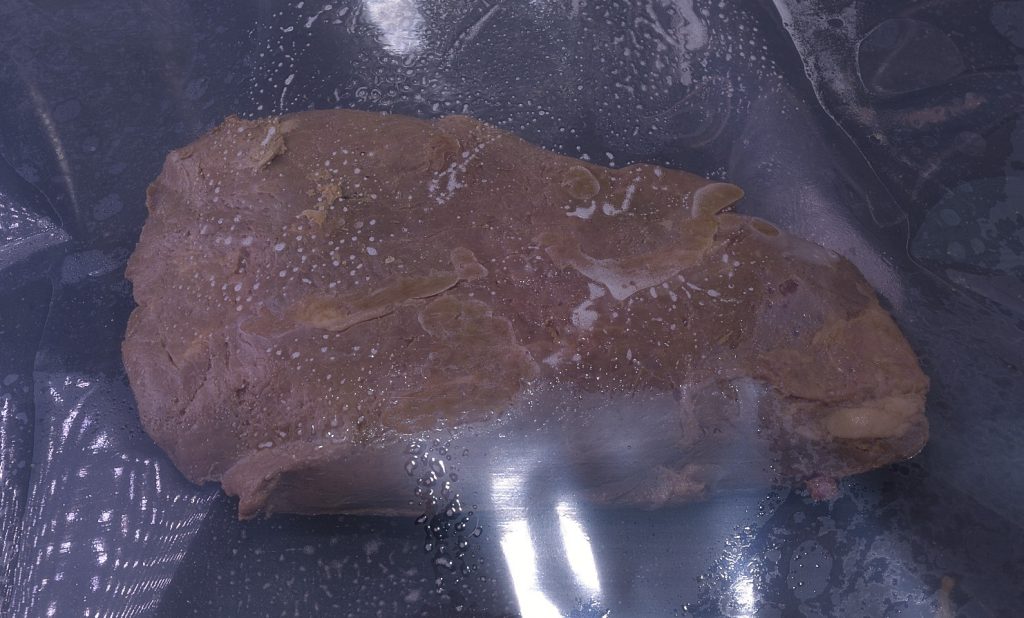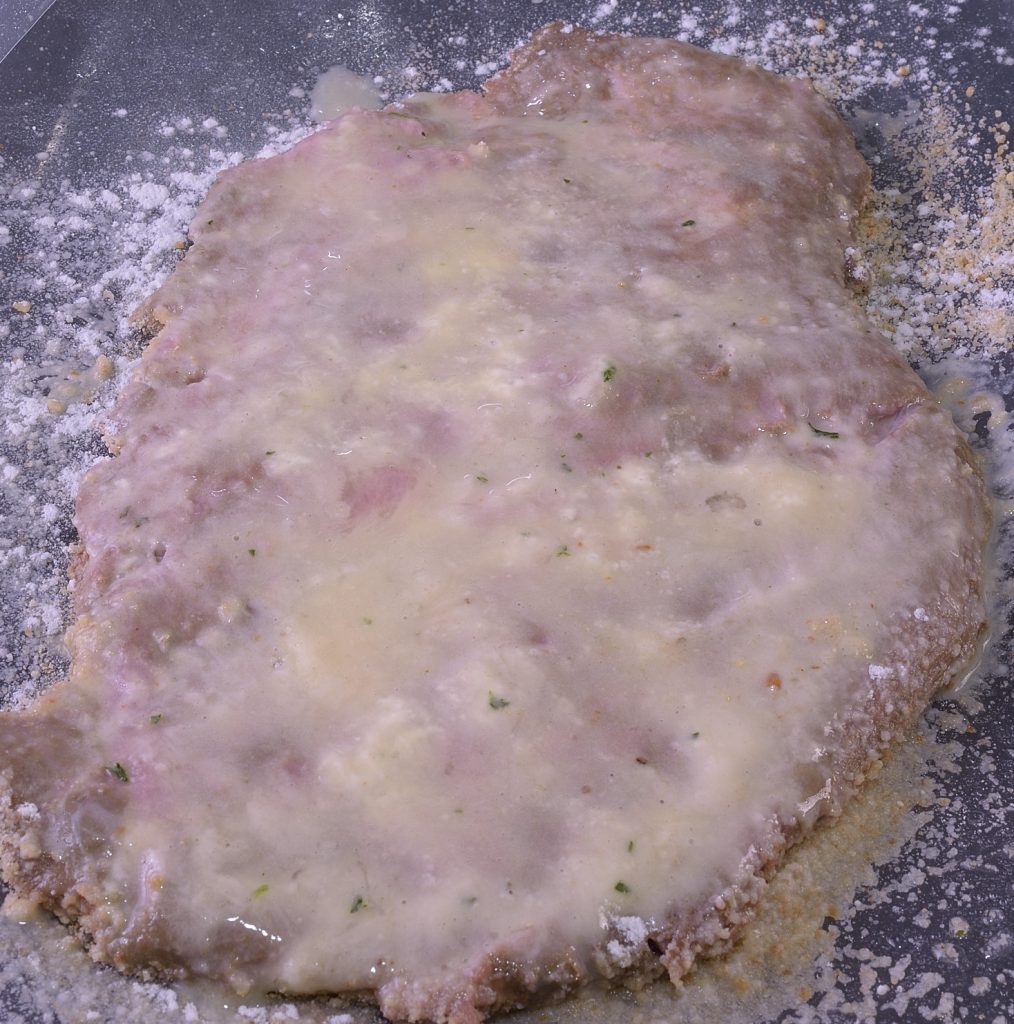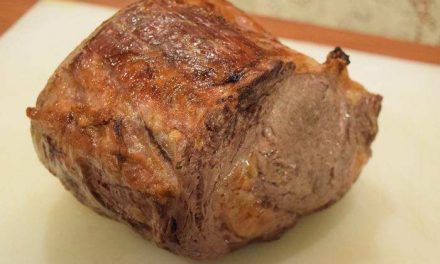
Above: Lipavi C15 container, N15 polycarbonate rack. Lipavi C15L lid.
Level of difficulty: 2.75

Crickets
Chicken fried steak has a lot in common with Spaghetti Bolognese and Barbecued Spare Ribs. Huh? Whenever someone refers to these items (and many others), the room falls silent for a moment while everyone conjures up their most evocative recollections of the dish–the way Mom made it, the way their favorite (and now extinct) diner made it, or even the way that they themselves make it.
What starts as an enthusiastic group hug quickly escalates into a debate replete with raised eyebrows and condescending smirks. Soon, the whole thing degenerates into a vitriolic argument with lots of shaking heads, raised voices and hurt feelings. Friendships can be destroyed. Otherwise stable partnerships can dissolve before our very eyes. Add some alcohol and you may even see some low-rent physical altercations.

Expectations
There are many versions of chicken fried steak. Each devotee is convinced theirs is the only real, true, authentic, acceptable, edible version. The fact that almost nobody uses the same coating on fried chicken as they would on chicken fried steak serves only to complicate matters.
Chicken fried steak isn’t exactly the sort of thing people associate with sous vide anyway. What could be further from the Chi-Chi stylings of Modernist Cuisine? But what is a chicken fried steak? When you get right down to it, it’s a classic veal cutlet without the classic veal. Pounded thin (or jaccarded) to compress and tenderize it, a cheap cut of beef is cleverly concealed in a heavy coating and fried. Where would you insert sous vide in that process? Could you stuff a breaded/battered slice of meat in a sous vide bag with any expectation of favorable results? Hardly. I suppose somebody may have tried it.

Keep Hope Alive
People come up will all kinds of crazy things to use sous vide for, all in the name of a sort of self indulgent “process of experimentation.” Sous vide’s best efforts are not totally limited to protein tenderization, moisture preservation and pasteurization–but that’s where the process really shines.
And let’s face it–even vigorous pounding and needling will not turn a really tough cut of meat into a tender one. Hopefully, the toughness may become somewhat less noticeable. So, sous vide CAN be used to tenderize that tough cut of meat–but the compressive pounding and breading need to come AFTERWARDS.
Good gravy!
I have a good friend who lived all over the south for many years, eventually settling in Oregon. I listened with intent as he apoplectically detailed, red-face with eyes popping, his appalled revelation that “up north” and/or “out west” a chicken fried steak might be served with brown sauce instead of the cloyingly thick cream gravy characteristic of the southern version. This fellow wouldn’t even know where to start when it came to preparing a chicken fried steak, but, by gum, he knew that it wasn’t even “real” unless it had cream gravy. People are really dogmatic about their culinary preferences. I like it both ways.
Ingredients:
Beef sirloin tip steak or roast or any tough, inexpensive, lean cut like chuck, top round, etc. Within limits, the size of the piece does not matter. You can process individual portioned pieces at approximately 6 oz/175 g, or you can process roasts up to 3 lbs./1.5 Kg and then portion them after processing. The temperature and interval remain the same–that is the beauty of sous vide!
Powdered egg white, as needed. I keep mine in a dredge/shaker. No mess, very convenient.
Preferred seasonings of your choice–salt not to exceed 2 teaspoons/lb. of meat.
Flour, as needed. I keep a dredge/shaker filled with flour as well.
Egg, 1 each, beaten will with 1 oz/30 ml water.
Bread crumbs, fine, as needed.
Vegetable oil.
Gravy as desired.
Equipment requirements:
A large skillet.

Procedure:
Preheat the sous vide bath to 128 F/53 C.
Vacuum seal the roast in heat rated plastic, stage into a rack and lower into the bath.
Process at 128 F/53 C for 48 hours and test for tenderness.
Cold shock the sealed packages in iced water until they achieve 70 F/21 C and refrigerate at 40 F/4 C. The sealed package can remain safely refrigerated in this state for at least two weeks.
Go to the tool kit, get a hammer…
The portions should be thick enough that the act of pounding them can compress the tenderized meat. This is necessary to achieve the chicken fried steak “effect.” They should be thin enough that the act of pounding them doesn’t tear them apart. I like them at about 1.5″. Using the heaviest surface available (like a butcher block) prevents vibration on impact.
Pounding and breading a chicken fried steak can be a messy proposition. Even seasoned cooks tend to resign themselves to having a significant clean up session when they are done. Or, they just abandon the ruins, explaining that they are too busy right now so they will do it later. This in the hopes that somebody else will do it for them. “I’ll buy the beers after work!”
This method prevents almost all of the heartache and saves on kitchen towels as well.
will prevent splatter.


#1 
#2 
#3 
#4 
#5 
#6


Service

Heat a skillet or cast iron frying pan to approximately
275F/135C
Add enough vegetable oil or lard to fully coat the bottom of the pan. Skimping on the oil can cause scorching–if the heat is maintained, very little of the oil will be absorbed into the breading. Carefully lay the cutlet down in the pan–oil should be visible all around the cutlet. Brown well. Do not crowd the pan. Just before I flip the cutlet, I blot the pan with a folded up paper towel to absorb excess oil–this keeps you from burning your wrist. Cook one at a time, drain the excess oil, wipe out the pan and repeat the process.

As the cutlet cooks, it may start to curl up around the edge. I try to avoid flipping the steak more than once. This really only takes about a minute or so. Flip the cutlet, but since it is already hot, only cook it on the second side for about thirty seconds. It will start to release a little water, which you will see and hear. This means it is “done.” Remove and drain to a paper towel. And there you have it!
For the Sinners Among Us

What you do next is totally up to you. Country gravy, brown gravy, East Coast, West Coast, Down South, the controversy will always be with us.

Mashed potatoes, au gratin potatoes, but always parsley. All of these are great dishes after you get home from bowling, for example.

Before the hangover, after the hangover, or even during the hangover…

Fried eggs on top. Apologies to dieters, vegetarians, etc.
“Cut me, Mick”
Norm King
Be sure to visit us on Facebook at https://www.facebook.com/groups/272128179509149/















